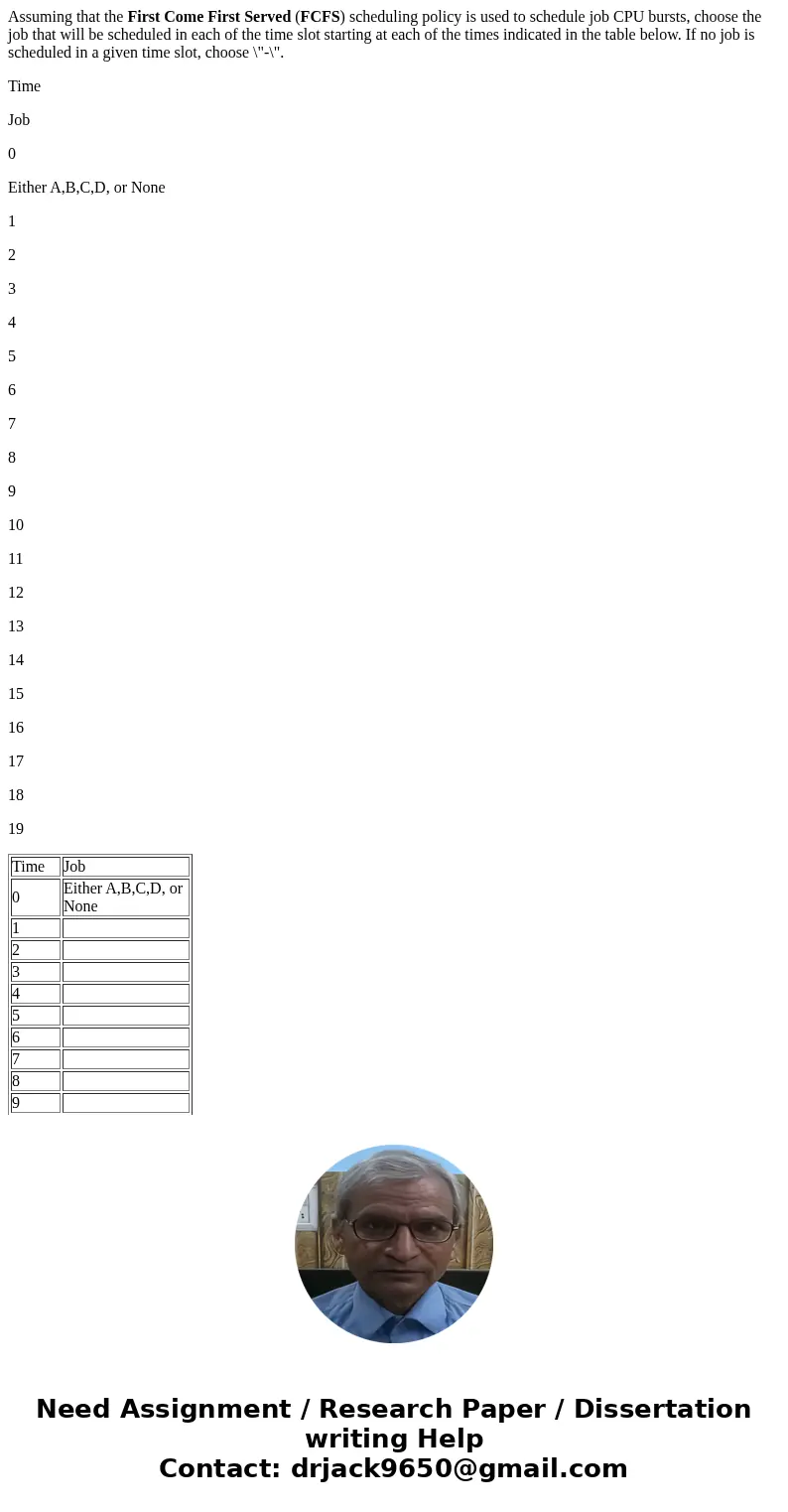Assuming that the First Come First Served FCFS scheduling po
Assuming that the First Come First Served (FCFS) scheduling policy is used to schedule job CPU bursts, choose the job that will be scheduled in each of the time slot starting at each of the times indicated in the table below. If no job is scheduled in a given time slot, choose \"-\".
Time
Job
0
Either A,B,C,D, or None
1
2
3
4
5
6
7
8
9
10
11
12
13
14
15
16
17
18
19
| Time | Job |
| 0 | Either A,B,C,D, or None |
| 1 | |
| 2 | |
| 3 | |
| 4 | |
| 5 | |
| 6 | |
| 7 | |
| 8 | |
| 9 | |
| 10 | |
| 11 | |
| 12 | |
| 13 | |
| 14 | |
| 15 | |
| 16 | |
| 17 | |
| 18 | |
| 19 |
Solution
At time 0, job D will arrive first and it will executed till time 4. Till now, job B, C and D already have arrived in the respective manner.
So, at time 5 job B will start executing but at time 8, it will go to waiting state and will added to the queue at time 11.
At time 9, job C will start executing till 9.
At time 10, job A will start executing till 11 and then it will go to waiting state.
At time 12, job B will resume its execution and it will continue its execution till time 14.
At time 15, there will be no job in the queue.
At time 16, job A will start executing till 19.
The following table summarize the above points
Hope it helps, do give your response.
| Time | Job |
| 0 | D |
| 1 | D |
| 2 | D |
| 3 | D |
| 4 | D |
| 5 | B |
| 6 | B |
| 7 | B |
| 8 | B |
| 9 | C |
| 10 | A |
| 11 | A |
| 12 | B |
| 13 | B |
| 14 | B |
| 15 | - |
| 16 | A |
| 17 | A |
| 18 | A |
| 19 | A |


 Homework Sourse
Homework Sourse